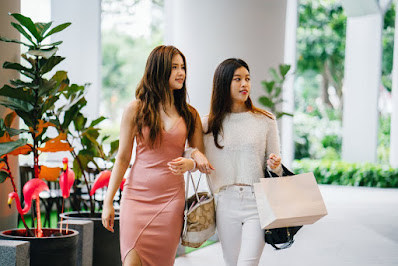How Handbag became Fashion
Handbag fashion Trend
How the handbag became the ultimate fashion accessory
A purse designed to look green was sewn outside the horse's oak. Shown here, opens in a small bag
A gold bag designed by contemporary British designer Emily Joe Gibbs (LOL Johnson / Victoria and the Albert Museum) to look like a European horse chestnut.
The exhibition, titled "Bags: Inside and Outside", runs through September, featuring more than 300 bags ranging from small handbags to military backpacks. Although the museum is currently closed to visitors in the UK during the recent Cove 19 Lockdown, fashion enthusiasts can peek into the online exhibition to learn about how modern bags are made from cowboy mulberry. Watch a short documentary, or read an article about some of them. exhibition. Highlights.
Their exhibits provide insights and insights into the function, condition, design and manufacture of bags around the world and throughout history," curator Lucia Savi said in a statement. "These portable and practical accessories have always fascinated men and women with their dual nature, both private and public."
Printed silk satin mesh bag, manufactured by Simon Lines, produced by Birmingham Family Society, Circa 1825 (Victoria and Albert Museum)
As Rachel Cook wrote in a review for The Observer, the forerunners of the modern bag are out of necessity. In 19th century Europe, for example, women wear women's clothing. These waist-high items come with a brooch with more than one accessory, like a Swiss Army knife hanging from its waist. In "Bag: Into Out", the chitlin vinegar dates from 1863 and contains 13 hanging tools, including scissors, a wallet, a ring, a small notebook, and a magnifying glass.
Bags are often made as a luxury item that reflects a person's status. In the 20th century, Siem Stresses in Pakistan embroidered high-profile dowry purses included in the show before marriage. In 18th-century Paris, artists' workshops, in a separate statement, made the design extraordinarily expensive, using a technique known as sandalwood to cover a small pearl purse.
Although some bags are designed for beauty, some bags also reflect the realities of war: H. Wald & Co. For example, a crawling skin polishing bag can expertly hide a WWII-E-E-E gas mask in the UK
And while handbags have traditionally been associated with women, men have also benefited from the bag. Between 1587 and 1591, Sir Christopher Hutton, a member of Elizabeth I's court, probably used a "handful" of silk, made of gold and silver thread, which would be the Queen's silver lining of Tudor, which Wax was used to make seal marks. Drawing decrees and announcements.
In 18th-century Japan, men wore enrollment boxes, tires wrapped around an obi or waist mark and brought personal seals, ink pads and medicine. According to the statement, the entry exhibition at the V&A Gallery includes a booth for Kanri, a silent liver, and Saki, an aphrodisiac. In addition, there is a bright red mailbox that Churchill used in the early 1920's when he was Secretary of State for Colonies.
Combining personal and political aspects, some handbags are designed to make a statement. In 1827, a disbanded group called the Birmingham Women's Society developed a small mesh bag decorated with a picture of a black slave woman breastfeeding her baby. The women of the community used such bags to carry and distribute anti-slavery campaign materials.
As Olivia Peter notes in a review for The Independent, the V&A Gallery also features an impressive selection of modern bags that will impress any avid museum visitor, including the original Birkin Bag. Including Hermes, made in 1984 for actress Jane Birkin. (Today, these popular designs are one of the most expensive handbags in the world.)














Comments
Post a Comment